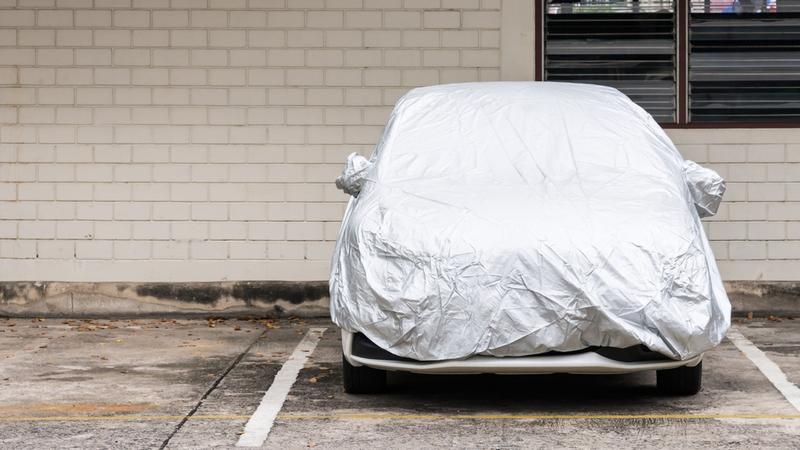Key takeaways:
- It’s possible to freeze your insurance coverage if you need to put a car into storage.
- To do this, you must apply for an endorsement, OPCF 16.
- Another endorsement, OPCF 17, will reinstate your coverage.
- There are other ways to drop road coverage, like cancelling your insurance policy, but this can backfire.
- You could also cancel your road coverage and go to comprehensive-only insurance; this also carries risk.
- The least risky option is to keep your current insurance policy but reduce your mileage.
You can’t drive a car in Ontario without insurance. But if you don’t plan on using your car for an extended period, you could save money by pushing pause on your insurance policy.
The recommended way to do this is to apply for an endorsement, also known as an Ontario policy change form (OPCF). Endorsements, which sometimes cost extra, can be used to increase or decrease the coverage offered by a basic insurance policy.
In this scenario, the two endorsements you will need are OPCF 16 (Suspension of Coverage) and OPCF 17 (Reinstatement of Coverage).
OPCF 16 will suspend your insurance, and when you’re ready, OPCF 17 will reactivate it.
Here are some scenarios where you might choose to freeze Ontario’s statutory road coverage using the OPCF 16 endorsement:
- You’re planning a long trip and won’t need your car
- You own a car that can’t be used in winter
- The car is no longer drivable
- Your driver’s license is suspended
- You can’t drive due to health reasons
How they work: OPCF 16 and OPCF 17
Here’s a rundown of how each endorsement works.
OPCF 16
When OPCF 16 takes effect (wait times vary by insurance provider), you still have access to the same benefits, at the same limits, as long as you don’t operate the vehicle. This will come in handy if you’re in an accident as a passenger or while driving a rented vehicle in another province or state. With OPCF 16, you keep:
- Third-party liability
- Accident benefits
- Some physical damage coverage
If you're a passenger in someone else's car and get into an accident, you'll still get medical benefits since the accident didn't involve the vehicle named in the endorsement. And even with OPCF 16 applied, you can still access accident benefits if you’re hurt in a collision while travelling in the U.S.
OPCF 16 may also provide a degree of protection against physical damage to your car (though it depends on your insurance company). If it’s damaged by an insured peril (like a fallen tree or another car driving into it), your insurance might cover the cost. However, to approve your claim, insurance companies will want proof that your vehicle was parked in storage, a driveway, or a garage; it can't be parked on the street.
OPCF 16 will apply to the car you specify in the form, as well as any car you acquire after the fact. Suppose you have a car with OPCF 16 applied and you buy a new one. You should call your insurance company immediately to ensure the policy with OPCF 16 doesn’t carry over to the new car.
Other things to know about OPCF 16:
- You pay your usual premium while OPCF 16 is in effect.
- You’re eligible for a refund once you reinstate your coverage, provided your car has been out of use for longer than 45 days.
- There’s no fee for adding OPCF 16.
- There are limits on how long you can suspend your coverage, but it varies by insurance company.
OPCF 17
This endorsement will reinstate your previous insurance policy. There’s no fee to reinstate coverage.
Cancelling coverage instead of buying OPCF 16 could backfire
You’re probably thinking why not just cancel insurance? That may not be the best idea as OPCF 16 still provides a measure of coverage if your car is appropriately stored. If something out of your control damages your car while in storage, you could claim it. If you cancel your auto insurance, you'll be stuck paying out-of-pocket.
You also have accident benefits with OPCF 16; you lose that when you cancel your insurance.
Next, there's a fee for cancelling insurance, usually a percentage of the balance on your annual premium.
Contrary to common belief, cancelling your insurance won’t necessarily put you in the position of paying a higher rate when you look for a new policy. Voluntarily cancelling your insurance is treated differently than cancellations initiated by a provider. Insurance companies will cancel your insurance over issues like non-payment or multiple traffic convictions.
However, just make sure no one drives the vehicle — operating a car without insurance is illegal in Ontario and a conviction will make it very challenging to secure coverage in the future.
Other ways to suspend car insurance coverage
Some providers might be able to remove all statutory coverage except comprehensive insurance (you may need to buy it if you didn't have it before; comprehensive insurance is optional coverage). It’s a manoeuvre known as going 'comp-only.'
Comprehensive insurance protects against damage caused by things unrelated to a collision with two cars in motion; for example, falling objects, severe storms, theft, and vandalism.
Going comp-only might also result in a cheaper premium than the OPCF 16 route. Another benefit of comp-only is that you won't need to file an endorsement to reinstate coverage.
However, to fulfill your request to go comp-only, an insurance company may require you to cancel your current policy (which includes road coverage) and then sell you a new policy with just comprehensive insurance.
Some insurance providers may refuse comp-only coverage altogether and insist on OPCF 16.
Is OPCF 16 the right choice?
There are ways to reduce your insurance costs without suspending your policy. During the initial COVID lockdown, some drivers reduced their insurance premiums by informing their providers of their reduced daily mileage and dropping collision protection while keeping their mandatory insurance coverage. This reduced insurance premiums for thousands of drivers.
Suspending your car insurance coverage is not a decision you should make lightly. It carries a lot of risk: if someone accidentally drives the car while the suspension is active, you risk a traffic conviction, which carries long-term repercussions. Make sure you consult an insurance professional — they have the expertise to help you adjust your coverage responsibly.

